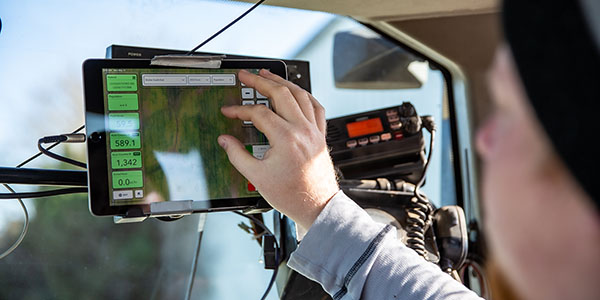AGRONOMICSUPPORT
YOU CAN TAKETO THE FIELD
Four Ways to Reduce Your Risk for Replanting
No one wants to spend the time, money and resources replanting the crop. Keep these tips in mind to ensure your planting efforts are successful — the first time around.
Check the calendar
Farming is a science — which means there’s plenty of data out there for what works and what doesn’t. This is true for early planting dates, too. For example, long-term studies show that the best time for planting corn in Illinois is the last week of April (according to the Illinois Agronomy Handbook, 23rd edition). Your local averages will vary, of course.
Wherever you’re growing your crop, follow up with your local LG Seeds agronomist for their input about when the best time to plant is.
Monitor soil temperature
Your best corn emergence will likely happen in soil that’s around 50°F or warmer. Measure soil temperatures and keep a close eye on forecasts in case your region is set to experience a cold front (especially if it’s one that will come with rain, which we’ll discuss next).
If you have low-lying areas throughout your land, plant them last. They tend to warm up slowly and can be subject to more late freezes.
Keep track of precipitation predictions
When you’re checking the weather forecast for cold fronts, monitor the precipitation predictions too. Wet conditions at planting lead to soil crusting and sidewall compaction, which impedes shoot emergence and root development. When all of that happens, the crop is more susceptible to disease, especially when it’s wet and cool. If significant amounts of rain are in the forecast, it might be worth pushing your planting dates a few days. If you can’t decide if the risk is worth it, follow up with your LG Seeds agronomist for their expert input.
Check the calendar, one more time
Things happen, and for as long as farming is dependent on uncontrollable environmental conditions, there will be risk for replanting. That’s why it’s important to understand your choices for replant assistance. Contact your crop insurance agent and double check their requirements for planting dates. Seed planted before the stated crop insurance planting date for your region won’t qualify for replant assistance.
It can be tempting to plant in unfit conditions, especially when the calendar starts to get late or if you’re looking to reach a high yield goal and want to expand your planting window. But the risk of replanting is the other side of the coin to weigh before making that decision. Keep an eye on weather forecasts (for both cold temperatures and rain), track your region’s data to optimize your planting dates, and pay attention to local crop insurance deadlines.
For more info on planting considerations, we have you covered.
Get in touch with your local LG Seeds agronomist to create a plan for reliable results and consistent yield.





